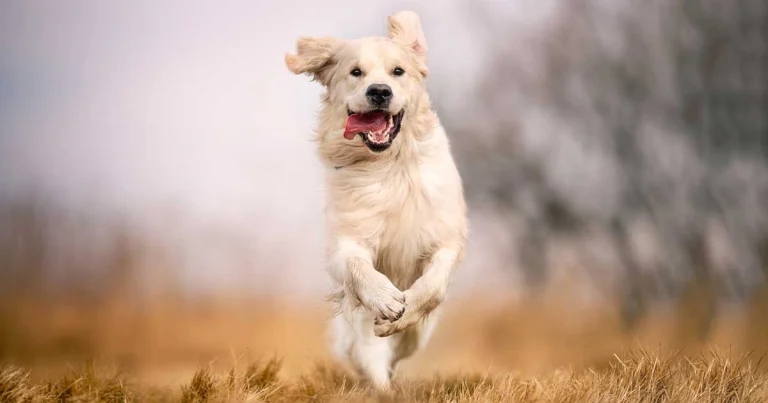Advertorial
10 October 2025
Acute kidney injury in dogs – could leptospirosis be the cause?
Why leptospirosis should remain high on your differential list – and how prevention can protect patients, clients and colleagues.

Image: Dyrefotografi.dk / Adobe Stock
Test your knowledge
Acute kidney injury (AKI) can be a diagnostic challenge in practice – and leptospirosis should always be on your radar.
Read the full article, then take the quick quiz below to see how much you know about spotting, diagnosing and preventing leptospiral AKI in dogs.
Acute kidney injury (AKI) in canines is one of the most concerning presentations in small animal practice. Potential rapid deterioration, non-specific early signs and a wide range of possible causes can make it a diagnostic and therapeutic challenge.
One condition that should always be on the differential list is the potentially fatal leptospirosis. Endemic across the UK, this often misunderstood and forgotten disease is a growing threat that’s capable of causing severe renal pathology. Take the quiz at the end of this article to test your knowledge and understanding.
Leptospirosis today: why vets should be alert
Leptospira bacteria, the cause of leptospirosis, are spread by the urine of infected hosts, especially rodents. Once excreted, the bacteria can persist in moist conditions such as puddles, waterlogged soil or stagnant water for weeks and months. This creates multiple opportunities for exposure.1
Leptospirosis is now recognised as a threat to all dogs, regardless of geography or lifestyle, including dogs in urban areas. The American College of Veterinary Internal Medicine (ACVIM) updated its consensus for treatment guidelines in 2023, stating:
“All dogs are at risk of leptospirosis, regardless of geographic location, lifestyle and the time of year.” Sykes et al, 20231.
Climate change, with wetter winters and warmer summers, combined with pet travel and international adoption, has potentially increased the diversity and prevalence of serogroups circulating in the UK.
Clinical presentations: when AKI should raise suspicion
While leptospirosis can cause multi-organ involvement, the disease primarily targets the kidneys and liver. Tubulointerstitial nephritis may lead to acute renal failure, with clinical signs including polydipsia, polyuria, oliguria or anuria, dehydration, azotemia, vomiting and diarrhoea.
Other presentations can complicate the picture. Presentations may be non-specific, such as lethargy and pyrexia, or organ-specific, depending on the body systems affected, for example1:
- Acute hepatopathy: jaundice, elevated liver enzymes, vomiting
- Pulmonary involvement: tachypnoea, dyspnoea, coughing and, in severe cases, pulmonary haemorrhage
- Gastrointestinal signs: diarrhoea, anorexia, weight loss
- Systemic signs: lethargy, fever, muscle pain
In one study2, 62% of dogs with leptospirosis had respiratory signs, and 70% showed pulmonary abnormalities on thoracic radiographs.
Laboratory abnormalities can also provide valuable clues when leptospirosis is on the differential list, including:
- Azotemia, often accompanied by elevations in liver enzymes and bilirubin
- Electrolyte disturbances, such as hyponatraemia, hypokalaemia and hyperphosphataemia
- Haematological changes such as anaemia, neutrophilia and thrombocytopenia
Such findings should heighten suspicion, while bilirubinuria may indicate concurrent hepatopathy.
Diagnostic imaging can further support suspicion. Thoracic radiographs may reveal interstitial or alveolar patterns consistent with pulmonary involvement, while abdominal ultrasound frequently demonstrates renomegaly and increased cortical echogenicity1.
Protecting staff and owners
Clients and staff should be educated on zoonotic risk, especially as dogs are capable of shedding bacteria before clinical signs appear. Strict barrier nursing protocols are essential to protect veterinary staff and pet owners when dealing with potential cases of leptospirosis. Even when caring for recovering pets, owners should be encouraged to wear gloves and disinfect surfaces to help reduce any risk of transmission to humans, where leptospirosis is known as Weil’s disease.
Diagnosis and management
Given the breadth of possible signs, any dog presenting with acute kidney injury, particularly in unvaccinated dogs, should always trigger consideration of leptospirosis.
Experts agree that all available diagnostic tests for leptospirosis have limitations, so an application of a combination of serologic assays and organism detection tests is recommended to optimise diagnosis of leptospirosis1. Examples of some are below:
- Serology: a four-fold or greater rise in paired Leptospira microscopic agglutination test (MAT) titres between acute- and convalescent-phase serum specimens
- PCR: detection of Leptospira DNA in blood using nucleic acid amplification test (urine testing is supportive but less reliable)
- Culture: isolation from clinical samples (this is rarely performed in practice due to technical challenges)
For a more in-depth discussion on case definitions and diagnostic criteria please refer to the most recent ACVIM guidelines on leptospirosis1.
Treatment requires hospitalisation in many cases. Supportive care, including fluid therapy, is often critical, alongside antibiotic therapy. Doxycycline is often recommended to help clear renal shedding, though penicillin may be used initially in systemically unwell dogs unable to tolerate oral medication1,3.
Prognosis depends on severity. Many dogs recover with prompt therapy, but those with severe renal, hepatic or pulmonary involvement often carry a guarded outlook.
According to Moore (2019),3 survival to discharge in hospitalised cases of leptospirosis is estimated at approximately 80%, though prognosis varies based on systemic involvement. However, survivors may experience chronic kidney disease, requiring ongoing monitoring.

Vaccination: essential for prevention and renal protection
Vaccination is one of the best protections against leptospirosis. Vaccines are aimed at protection against four of the major serogroups in the UK (Icterohaemorrhagiae, Canicola, Australis and Grippotyphosa),4 and the WSAVA recommends quadrivalent protection over bivalent5.
Vaccinations can differ, and some have been shown to help protect against the renal complications that define severe disease6. Dogs with leptospiral AKI may survive the acute phase but remain at risk of chronic dysfunction. By limiting this damage, those vaccines can help improve survival and enhance quality of life after recovery.
Educating owners about the growing risk of leptospirosis and the benefits of vaccination can help overcome reluctance, especially as effective vaccination can lower the risk of transmission to in-contact animals and people.
When it comes to vaccine protocols, puppies should begin with a primary course of two vaccinations administered four weeks apart6 or according to manufacturers’ guidelines, followed by annual boosters to maintain immunity. Vets should be mindful that protective immunity is serogroup-specific and not all circulating strains are covered. Therefore, while vaccination significantly reduces risk, leptospirosis should remain a differential in compatible clinical presentations.
Conclusion
While leptospirosis remains a diagnostic challenge, its role as a cause of AKI in dogs should not be underestimated. Keeping it high on the differential list for AKI means that life-saving treatment can be given as early as possible. Educating owners about the risks of leptospirosis and encouraging them to vaccinate their dogs against it is ultimately the best defence against both canine disease and zoonotic transmission, protecting clients, their families and veterinary colleagues.
References
- 1. Sykes JE, Francey T, Schuller S et al (2025). Updated ACVIM consensus statement on leptospirosis in dogs, Journal of Veterinary Internal Medicine 37(6): 1,966-1,982 (available at https://doi.org/10.1111/jvim.16903)
- 2. Kohn B, Steinicke K, Arndt G et al (2011). Pulmonary abnormalities in dogs with leptospirosis, Journal of Veterinary Internal Medecine 24(6): 1,277-1,282.
- 3. Moore GE (2019). Diagnosis and treatment of leptospirosis in dogs, Today’s Veterinary Practice, available at https://todaysveterinarypractice.com/wp-content/uploads/sites/4/2022/03/TVP-2019-0910_Leptospirosis.pdf
- 4. Wenderlein J, Zitzl T, Dufay-Simon N, Cachet N, Pantchev N, Guyader ML, Fontana C, Bomchil N, Tronel J-P, Cupillard L. and Straubinger RK (2024). Detection and Identification of pathogenic Leptospira spp serogroups in Europe between 2017 and 2020 applying a novel gene-based molecular approach, Transboundary and Emerging Diseases. 2024: eCollection 2024. https://onlinelibrary.wiley.com/doi/10.1155/2024/1101841
- 5. Squires RA, Crawford C, Marcondes M and Whitley N (2024). 2024 guidelines for the vaccination of dogs and cats – compiled by the Vaccination Guidelines Group (VGG) of the World Small Animal Veterinary Association (WSAVA), Journal of Small Animal Practice 65(5): 277-316. https://doi.org/10.1111/jsap.13718
- 6. Eurican L4, summary or product characteristics, https://www.vmd.defra.gov.uk/productinformationdatabase/files/SPC_Documents/SPC_2572039.PDF

